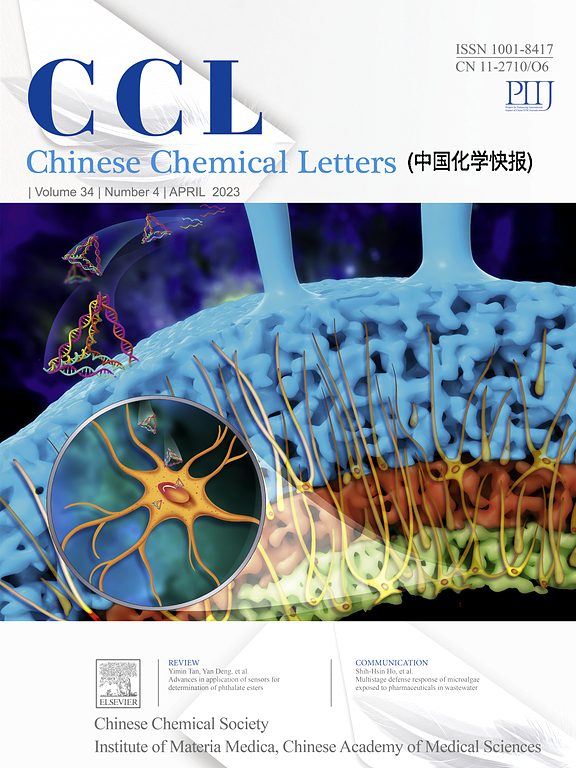Stable radicals in bacteria composites hybridized by a doubly-strapped perylene diimide for near-infrared photothermal conversion
IF 9.4
1区 化学
Q1 CHEMISTRY, MULTIDISCIPLINARY
引用次数: 0
Abstract
Radical anions of electron-deficient perylene diimides (PDI) are attractive near-infrared (NIR) absorbers for photothermal conversion; however, their stability is often compromised by strong aggregation and reoxidation in air. Herein, we present a class of bacterial composites hybridized with a newly synthesized doubly-strapped PDI cyclophane, termed “Gemini Box” (GBox-34+), which features air-stable PDI radicals for NIR photothermal conversion. The effective spatial isolation provided by the double-sided cationic molecular straps allows GBox-34+ to completely suppress chromophore aggregation, even in concentrated aqueous solutions up to 2 mmol/L, thereby preserving its characteristic fluorescence for live-cell imaging. After incubation of bacteria with GBox-34+, the radical species PDI•– have been found to stably exist in the bacterial composites under ambient conditions, both in aqueous suspension and solid forms. Further experiments demonstrate that the air stability of the radical species relies on the simultaneous presence of the doubly-strapped PDI dye and the bacteria. Moreover, the dye-bacterial composites exhibited an high-efficiency NIR photothermal effect with high durability, enabling their application as photothermal agents for seawater desalination. This work provides a new access to the in situ fabrication of photothermal materials from biomass, relying on the rational molecular design and the unique microenvironment of bacteria.

双链苝二亚胺杂化细菌复合材料中用于近红外光热转换的稳定自由基
缺电子苝二酰亚胺(PDI)自由基阴离子是光热转换中有吸引力的近红外(NIR)吸收剂;然而,它们的稳定性经常因空气中的强聚集和再氧化而受到损害。在这里,我们提出了一类与新合成的双束PDI环烷杂交的细菌复合材料,称为“Gemini Box”(GBox-34+),它具有空气稳定的PDI自由基,用于近红外光热转换。双面阳离子分子带提供的有效空间隔离使GBox-34+即使在高达2 mmol/L的浓水溶液中也能完全抑制发色团聚集,从而保留其用于活细胞成像的特征荧光。用GBox-34+培养细菌后,发现自由基PDI•-在环境条件下稳定存在于细菌复合材料中,无论是水悬浮液还是固体形式。进一步的实验表明,自由基的空气稳定性依赖于双束PDI染料和细菌的同时存在。此外,染料-细菌复合材料表现出高效率的近红外光热效应和高耐久性,使其成为海水淡化的光热剂。本研究为利用生物质能原位制备光热材料提供了一条新的途径,它依赖于合理的分子设计和细菌独特的微环境。
本文章由计算机程序翻译,如有差异,请以英文原文为准。
求助全文
约1分钟内获得全文
求助全文
来源期刊

Chinese Chemical Letters
化学-化学综合
CiteScore
14.10
自引率
15.40%
发文量
8969
审稿时长
1.6 months
期刊介绍:
Chinese Chemical Letters (CCL) (ISSN 1001-8417) was founded in July 1990. The journal publishes preliminary accounts in the whole field of chemistry, including inorganic chemistry, organic chemistry, analytical chemistry, physical chemistry, polymer chemistry, applied chemistry, etc.Chinese Chemical Letters does not accept articles previously published or scheduled to be published. To verify originality, your article may be checked by the originality detection service CrossCheck.
 求助内容:
求助内容: 应助结果提醒方式:
应助结果提醒方式:


